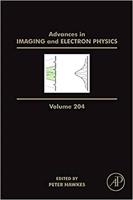Publisher's Synopsis
MATLAB filter functions and other Signal Processing Toolbox functions allows to analyze filter characteristics, including impulse response, magnitude and phase response, group delay, and zero-pole locations. The discrete-time system models are representational schemes for digital filters. The MATLAB technical computing environment supports several discrete-time system models. Filter design is the process of creating the filter coefficients to meet specific filtering requirements. Filter implementation involves choosing and applying a particular filter structure to those coefficients. Only after both design and implementation have been performed can data be filtered. This book describes filter design and implementation in Signal Processing Toolbox software. The filterBuilder function provides a graphical interface to the fdesign objectoriented filter design paradigm and is intended to reduce development time during the filter design process. filterBuilder uses a specification-centered approach to find the best algorithm for the desired response. The basic workflow in using filterBuilder is to hoose the constraints and specifications of the filter, and to use those constraints as a starting point in the design. Postponing the choice of algorithm for the filter allows the best design method to be determined automatically, based on the desired performance criteria. When you have achieved the desired filter response through design iterations and analysis using the Filter Visualization Tool, apply the filter to the input data. Again, this step is never automatically performed for you by the software. The Filter Designer app is a user interface for designing and analyzing filters quickly. The app enables you to design digital FIR or IIR filters by setting filter specifications, by importing filters from your MATLAB workspace, or by adding, moving or deleting poles and zeros. It also provides tools for analyzing filters, such as magnitude and phase response and pole-zero plots. Once you have designed your filter, you can display the filter coefficients and detailed filter information, export the coefficients to the MATLAB workspace, create a C header file containing the coefficients, and analyze different filter responses in the app or in a separate Filter Visualization Tool (fvtool). You can generate MATLAB code that constructs the filter you designed in Filter Designer from the command line. This book also discusses statistical signal processing tools and applications, including correlations, covariance, and spectral estimation.










